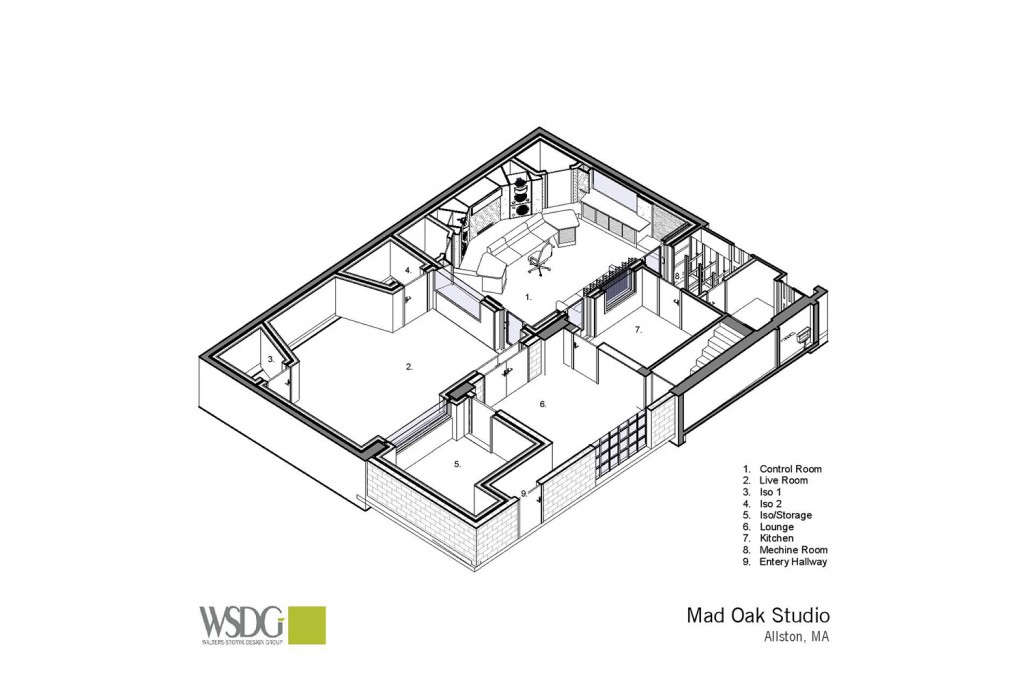
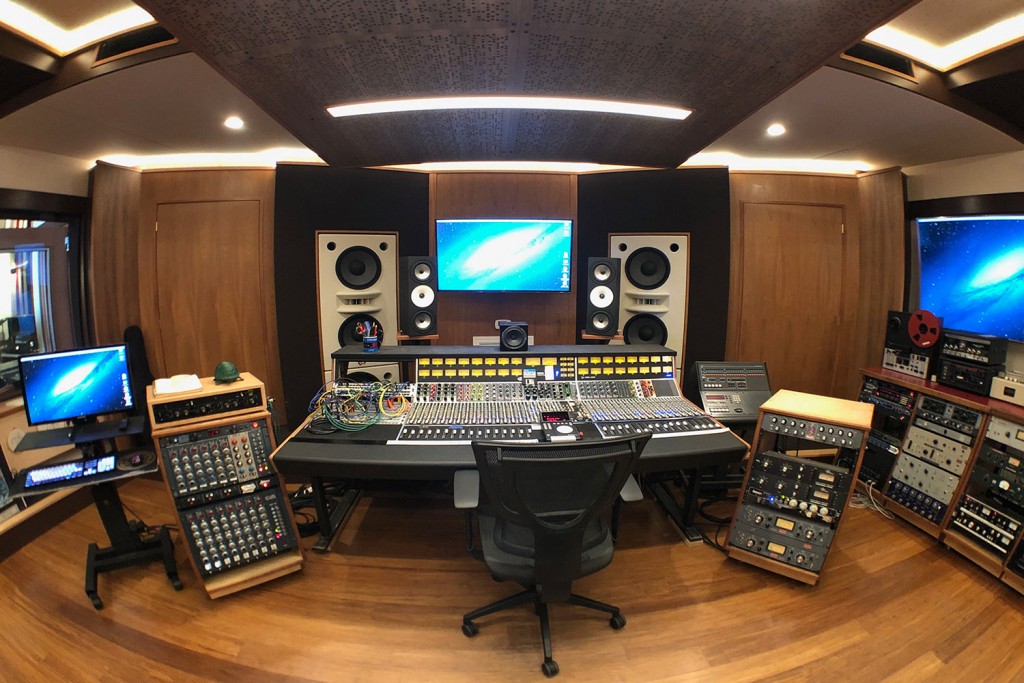
A Boon To Boston’s Underserved Indigenous Live Music Community
BOSTON MASS. Recording industry gear guru, serial entrepreneur and long-time Boston-based studio owner PK Pandey shuttered his original Mad Oak Studio in 2011 when the building owner decided to monetize the property. A search for new quarters produced a desirable building site, but the town’s archaic zoning and construction ordnances kept the project on hold until 2015 when new mayor Marty Walsh arrived on the scene and put Mad Oak Studios back on track. WSDG has created studios for Aerosmith, the Boston Symphony Orchestra, and the Berklee College of Music, but Mad Oak marks the firm’s first commercial studio credit in Boston.
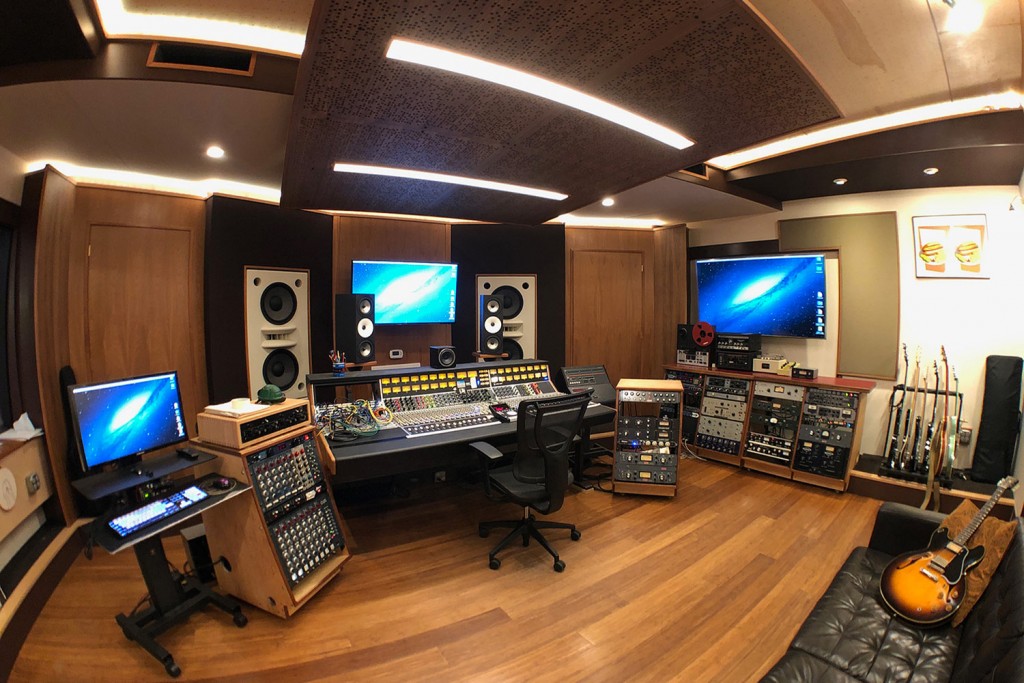
“We hadn’t been biding our time during this multi-year waiting game,” Pandey explains. “I’ve enjoyed a long-term working relationship with WSDG. I collaborated with them on Miami’s Dream Asylum, Paul Epworth’s Church Studios in London, Ann Mincieli & Alicia Keys’ Jungle City Studios in NYC and many other projects via my AVN SYS, A/V design/integration firm. WSDG was the only design firm I considered for our new facility. My partner, Benny Grotto, who had been head engineer/house producer for the original Mad Oak, and I worked closely with architect/acoustician John Storyk and WSDG COO/project manager, Joshua Morris to create a 1000 sq. ft. studio that would genuinely rock Boston’s recording scene.
Studio design is complex work, and while most of our clients are knowledgeable about technology and acoustics, few have PK’s encyclopedic hands-on expertise,” Joshua Morris remarked. “Consulting with him on Mad Oak was a text book example of teamwork. We had productive conversations on every aspect of Mad Oak, from technology to acoustic treatments. In fact, one of PK’s best suggestions was to repurpose a whitewashed barn wood diffusor that had contributed significantly to Mad Oak’s original signature sound. We modified the unit with a rigid, inch-deep frame for a stretched acoustical fabric insulation treatment that further enhanced its effectiveness. It looks great, and it does a terrific job in-fine tuning the room.”
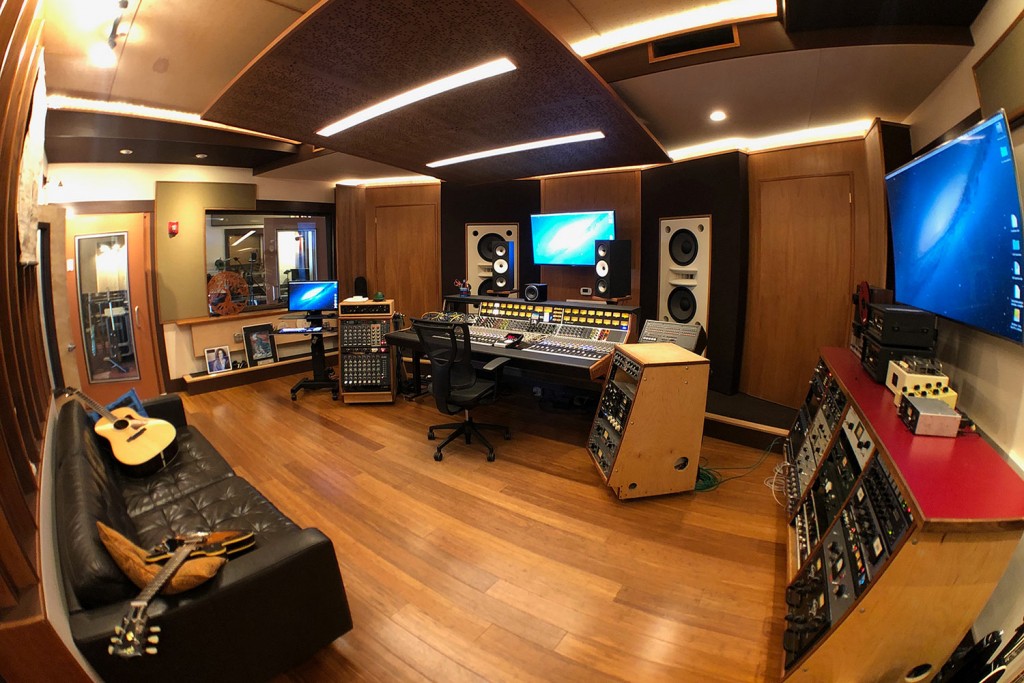
With a 500 sq. ft. live room and equally spacious 500 sq. ft. Control Room, Mad Oak provides an ideal space for live band sessions. Pandey’s extensive gear experience, led him to select an API 1608 32 Console, Pro Tools HDX, Burl Audio converters, and, large format monitors custom built by PK’s Symphonic Acoustics company. The studio also offers an enviable assemblage of reverbs, vintage mics, ample outboard gear, and a rare Neve module.
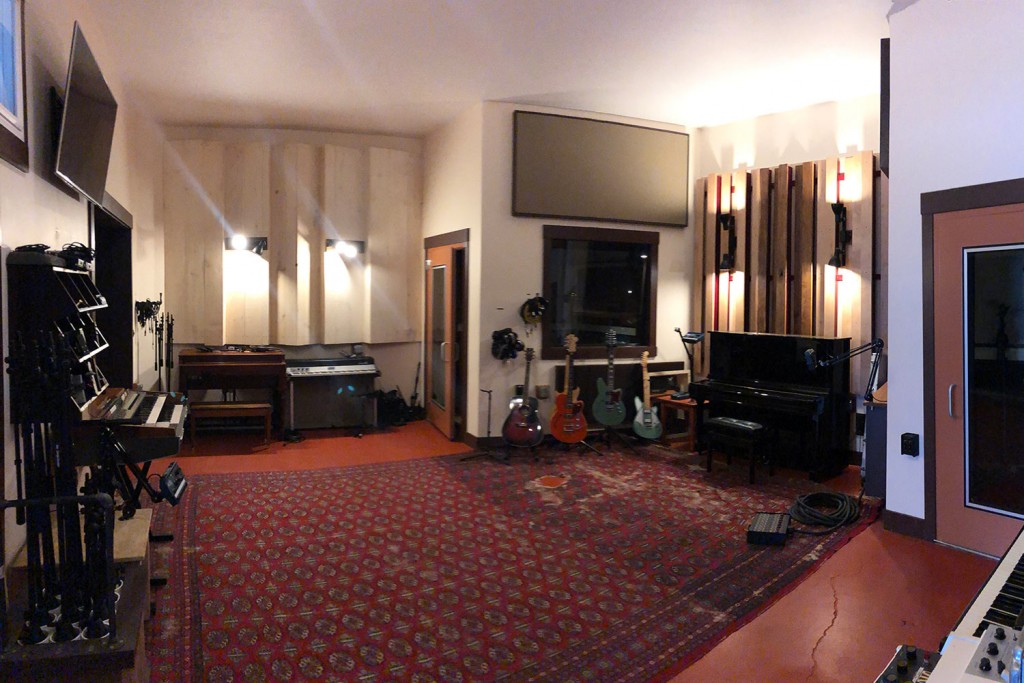
“Boston’s thriving indigenous live music community has been underserved by a short list of existing studios,” Pandey says. “Our first Mad Oak enjoyed a healthy run for over 11 years. Many of our original clients are still here, and a number of new artists are now in residence. We began hosting sessions even before the studio was completed, with clients ranging from Chris Robinson of The Black Crowes (with Joe Perry of Aerosmith), Shadow Party and Magnetic Fields. Word is already out that we’re ready to rock.”
“Mad Oak is a gem,” John Storyk concludes. “We incorporated a number of design elements that we pioneered for such major studios as the Berklee College of Music’s 160 Massachusetts Ave. complex and Ann Mincieli’s Jungle City. PK’s business model is geared to providing a cost-effective recording option to local musicians. And, in their effort to promote Boston’s wider studio community, he and Benny Grotto are happy to recommend other studios to artists when they can’t accommodate dates due to booking conflicts. That’s a terrific attitude.”
